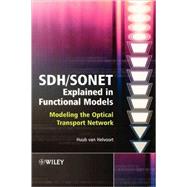
Note: Supplemental materials are not guaranteed with Rental or Used book purchases.
Purchase Benefits
Looking to rent a book? Rent SDH / SONET Explained in Functional Models Modeling the Optical Transport Network [ISBN: 9780470091234] for the semester, quarter, and short term or search our site for other textbooks by van Helvoort, Huub. Renting a textbook can save you up to 90% from the cost of buying.
Huub van Helvoort has an M.S.c. in Electrotechnical Engineering from the Technical University of Eindhoven in 1977. He has worked at Philips Telecommunication Industries, AT&T, and as System Architect for Lucent technologies working on ISM successors ADM16/1 and Metro ADM (2nd and 3rd generation SDH equipment). In addition he has taught telecommunication technology to post graduate students at the University of Utrecht. The standardisation of VCAT, LCAS and GFP was one of Helvoort's major achievements. He was the representative for Lucent on these subjects in the international standards body ITUT and the regional standards bodies ANSI T1X1.5 and ETSI TM. He was the editor if ITU-T recommendations G.707, G.783, G.7042. He chaired the working group TM1 and TM1-WP3 in ETSI and of the ETSI standard EN 300 417.
|
|||
|
|||
|
|||
|
|||
|
|||
|
|||
|
|||
|
|||
|
|||
|
|||
|
|||
|
|||
|
|||
|
|||
|
|||
|
|||
|
|||
|
|||
|
|||
|
|||
|
|||
|
|||
|
|||
|
|||
|
|||
|
|||
|
|||
|
|||
|
|||
|
|||
|
|||
|
|||
|
|||
|
|||
|
|||
|
|||
|
|||
|
|||
|
|||
|
|||
|
|||
|
|||
|
|||
|
|||
|
|||
|
|||
|
|||
|
|||
|
|||
|
|||
|
|||
|
|||
|
|||
|
|||
|
|||
|
|||
|
|||
|
|||
|
|||
|
|||
|
|||
The New copy of this book will include any supplemental materials advertised. Please check the title of the book to determine if it should include any access cards, study guides, lab manuals, CDs, etc.
The Used, Rental and eBook copies of this book are not guaranteed to include any supplemental materials. Typically, only the book itself is included. This is true even if the title states it includes any access cards, study guides, lab manuals, CDs, etc.